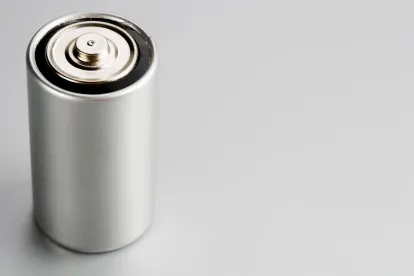On February 9th, 2023, the Consumer Product Safety Commission (CPSC) published a proposed rule, as required by Reese’s Law, for button cell and coin batteries and products sold with them. While the publication of the final rule was expected by August 16th, 2023, and has been delayed, a key requirement of Reese’s Law is already effective. Section 3, effective since February 12th, 2023, requires all button cell and coin batteries sold individually or packaged separately with a consumer product to meet the packaging requirements of the Poison Prevention Packing Act (PPPA). Manufacturers of affected products not currently in compliance with the PPPA requirement are immediately vulnerable, and manufacturers should also prepare for compliance with the forthcoming final rule, which will likely contain most of the proposed rule’s requirements and will be effective 180 days after publication.
At a glance:
- Reese’s Law, passed in August 2022, aims to protect children 6 years old and younger against risks associated with the ingestion of button cell or coin batteries.
- Button cell and coin batteries are broadly defined by the law to include “(A) a single cell battery with a dimeter greater than the height of the battery; or (B) any other battery” that “[poses] an ingestion hazard.”
- Effective now, button cell and coin batteries individually sold and packaged separately with a consumer product must utilize child-resistance packaging in accordance with the PPPA, under Section 3 of Reese’s Law. The PPPA requirement was effective on February 12, 2023.
- Button cell and coin batteries and products containing them will also have to comply with new performance, warning label, and notification requirements, under a proposed CPSC rule.
- The proposed rule has not been finalized, although Reese’s law directs CPSC to do so by August 16th, 2023. Once published, the final rule will go into effect 180 days later.
Below we discuss in detail Reese’s Law two main requirements that impact manufacturers of affected batteries and products:
1. PPPA Packaging Requirement – Effective Now
Effective since February 23rd, 2023, Section 3 of Reese’s Law requires all button cell and coin batteries sold individually or packaged separately with a consumer product to utilize packaging that meets the requirements of the PPPA. Importantly, under Section 3, the PPPA requirement does not extend to consumer products that contain a pre-installed battery. The PPPA requirement is now in effect, and manufacturers of affected products must ensure full compliance with it.
Under the PPPA requirement, affected products must utilize child-resistant, senior-friendly packaging that is certified to meet the PPPA’s testing procedures. The PPPA outlines an extensive testing procedures for certifying products, including tests involving children and adults under specific conditions.
Manufacturers of affected products not currently in compliance with PPPA are immediately vulnerable.
2. Proposed CPSC Battery Warning Label, Performance, and Purchaser Notification Requirements
Published on February 9th, 2023, the CPSC’s proposed rule outlines comprehensive battery performance, warning label, and purchaser notification requirements. The proposed rule applies broadly to the packaging of button cell and coin batteries and of products that contain these batteries, whether pre-installed or packaged separately. The rule also applies to “products that are not sold with a battery, if they are designed to use a button cell or coin battery.”
CPSC has not yet finalized the proposed rule, although Reese’s law directs it to do so by August 16th, 2023. Once published, the final rule will go into effect 180 days later.
The proposed rule includes four main requirements that manufacturers of affected batteries and products must comply with:
- Warning Label Requirements – Specific warning labels are required on the packaging of all button cell and coin button batteries, whether sold individually or packaged separately with a consumer product. Warning labels are also required on the packaging of and on consumer products with pre-installed batteries, as well as on the instruction manuals included with these products. Warning labels must meet the specifications outlined in the proposed rule.
- Performance Requirements – The proposed rule requires that button cell or coin batteries must not become accessible or liberated when tested to a series of performance and accessibility tests. Generally, requiring a coin or tool to open a battery compartment addresses child access to the battery compartment.
- Required Notifications to Purchasers – The proposed rule also requires manufacturers of affected products to publish specific battery safety information on their websites accessible to purchases.
- Certification – Importantly, the proposed rule requires manufacturers of affected products to issue a General Certificate of Compliance (GCC), certifying their products comply with the labeling and performance regulations they are subject to. However, testing to the special packaging requirements of the PPPA is not required to be conducted by a third-party, CPSC-accepted laboratory. All non-toy children’s products must be certified by a third-party, CPSC-accepted laboratory.
Given the extensive nature of the proposed requirements, we recommend manufacturers of affected batteries and products start preparing for compliance with the proposed rule. The final rule will likely contain many of the requirements outlined in the proposed rule.





 />i
/>i
